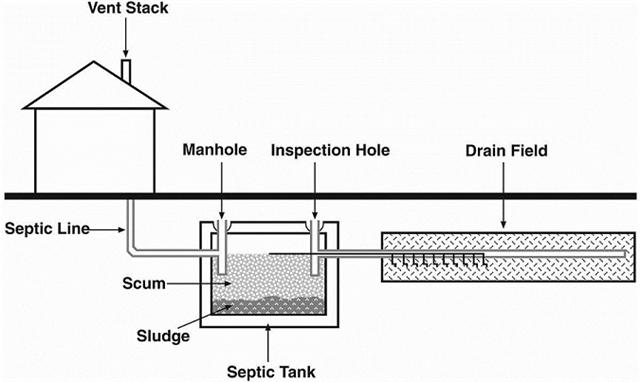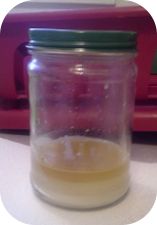Septic Tank Maintenance
Septic Tank Maintenance

Improper construction, misuse, or lack of maintenance can cause septic tanks to contaminant ground water with bacteria and viruses. It’s not hard to imagine that we don’t want to drink the material that ends up in our septic tanks!
The diagram shows how a septic system works. Wastewater flows out of the home and into the tank. Most solid material sinks to the bottom of the tank and forms a sludge layer. Other solids float to the top and form a scum layer. Natural micro-organisms within the tank break down this material and consume some of it.
Material that is not consumed by the micro-organisms in the tank enters the drain field on the tank owner’s property. Here, it spreads out through the soil where it receives some natural filtration. However, too much of this discharge can be bad. Dangerous material is carried in this discharge, including disease-carrying germs and nitrates. Once it enters the drain field, it is spread out through the ground and can easily enter groundwater sources.
Septic tanks must be pumped regularly to remove excess solids. If the tank is not pumped regularly it will become too full and cause overflow in the drain field. This may also happen if the septic lines get clogged. Overflow in the drain field can result in the surface of your yard becoming flooded with sewage, or sewage backing up into your home! This kind of damage is both dangerous to your health and costly to fix.
How can you help? Explore the information below!
Launch a homeowner’s outreach program in your area to educate people with septic tanks about their responsibilities. Explore all the great mailers, brochures, posters, and other material created and made available through EPA’s SepticSmart Program.
View a short document, created by Utah’s Department of Environmental Quality, on how to properly care for your septic tank. This page can be included in utility bills or posted at your City Hall.
Download a brochure on septic care and maintenance. Include these in utility bills, or have them available at your City Hall and local library.
Download a mailer on what not to flush. This is a useful mailer for public municipalities that have a wastewater treatment facility, as well as septic owners.
Download for a flyer on what not to flush. Post this wherever you think people might see it – hardware store, library, post office, etc.
View a list of licensed septic tank pumpers in Idaho
This is the proper way to dispose of grease, oil and fat from your kitchen. Pour it into a jar or can and then dispose of the container in the trash.
Care and maintenance
- Do not pour excess water over your drain field area. This will flush the leaching sewage material into groundwater sources quicker, without allowing it to filter through the soil.
- Do not drive heavy vehicles over the tank site. You don’t want to damage its construction in any way.
- Don’t build or plant trees or large shrubs over the drain field or the tank.
- Have your septic tank cleaned and pumped out by a licensed plumber every three years!
Proper water use in your home
- Your septic tank can only handle a certain amount of wastewater at one time. Stick to the following guidelines to avoid overflow issues:
- Do not wash all of your laundry on the same day. Spread it out over the week.
- Fix leaking toilets and faucets as soon as possible.
- Do not use the dishwasher until it is full.
- Limit lengthy showers and overly-full bath tubs.
Don’t treat your drains like a trash can!
Your septic system is designed to treat only certain items. Follow these guidelines to avoid clogs and septic failures:
- Do not pour grease or cooking oil down the sink.
- Do not flush napkins, towels, diapers, sanitary products, cigarette butts, q-tips, cotton swabs, or condoms.
- Limit use of your garbage disposal. They can overload your system with too many solids.
- Do not use more cleaning products than is advised on the label.
- Do not flush hazardous materials down the drain or toilet. See our page on household hazardous waste for more information.
